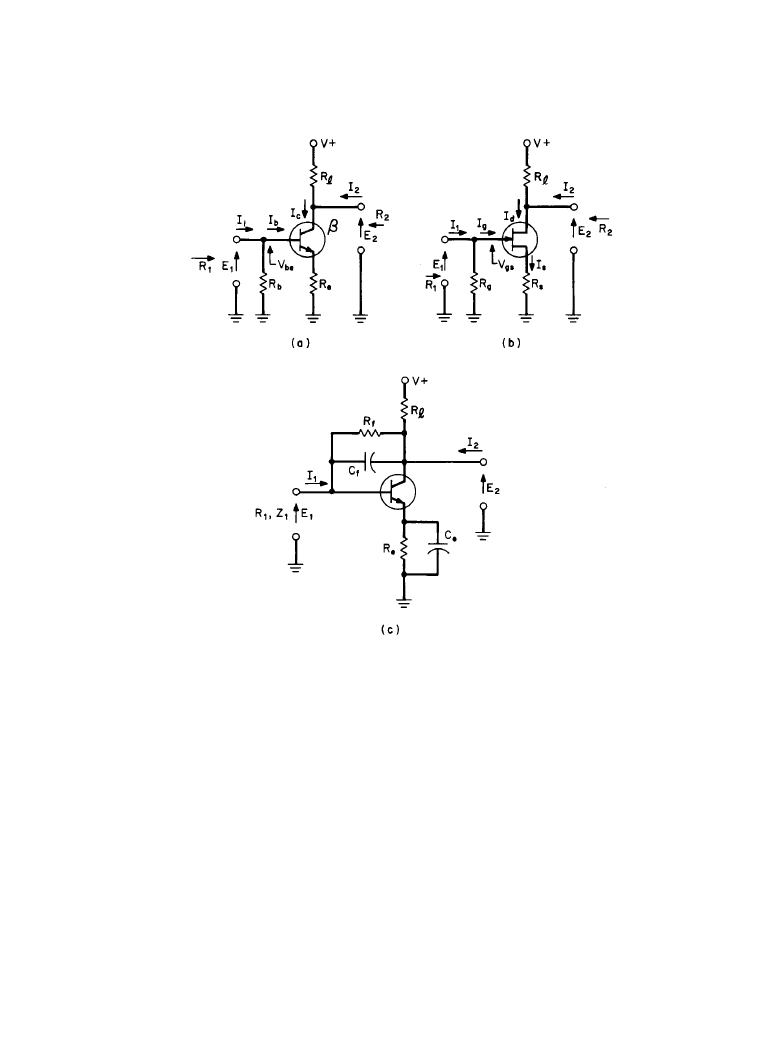ВУЗ: Казахская Национальная Академия Искусств им. Т. Жургенова
Категория: Книга
Дисциплина: Не указана
Добавлен: 03.02.2019
Просмотров: 21647
Скачиваний: 19

Stereophonic Techniques 4-45
as they can, so that when that “impossible situation” does present itself, the relevant knowledge
and the tools will be at hand to meet the situation.
4.2.4
References
1.
Blumlein, A.: British Patent 394,325, December 14, 1931; reprinted in J. Audio Eng. Soc.,
vol. 6, April 1958.
2.
Dooley, W. L., and R. D. Streicher: “M-S Stereo: A Powerful Technique for Working in Ste-
reo,” J. Audio Eng. Soc., vol. 30, pp. 707–718, October 1982.
3.
“A Phased Array,” Hi Fi News Record Rev., July 1981.
4.
Gordon, J.: “Recording in 2 and 4 Channels,” Audio, pp. 36–38, December 1973.
5.
“Miking with the 3-Point System,” Audio, pp. 28–36, December 1975.
Downloaded from Digital Engineering Library @ McGraw-Hill (www.digitalengineeringlibrary.com)
Copyright © 2004 The McGraw-Hill Companies. All rights reserved.
Any use is subject to the Terms of Use as given at the website.
Stereophonic Techniques

Downloaded from Digital Engineering Library @ McGraw-Hill (www.digitalengineeringlibrary.com)
Copyright © 2004 The McGraw-Hill Companies. All rights reserved.
Any use is subject to the Terms of Use as given at the website.
Stereophonic Techniques

4-47
Chapter
4.3
Low Power Amplifiers
Daniel R. von Recklinghausen
4.3.1
Introduction
Amplifiers are the functional building blocks of audio and video systems, and each of those
building blocks contains several amplifier stages coupled together. An amplifier may contain its
own power supply, while an amplifier stage needs one or more external sources of power. The
active component of each amplifier stage is usually a transistor or a field-effect transistor (FET).
Other amplifying components, such as vacuum tubes, can also be used in amplifier circuits if the
general principles of small- and large-signal voltages and current flows are followed [1–4].
4.3.2
Single-Stage Transistor or FET Amplifier
The single-stage amplifier can best be described as using a single transistor or FET connected as
a common emitter or common-source amplifier, using an NPN transistor (Figure 4.3.1a) or an N-
channel FET (Figure 4.3.1b) and treating PNP transistors or P-channel FET circuits by simply
reversing the current flow and the polarity of the voltages.
4.3.2a
DC Conditions
At zero frequency or dc and also at low frequencies, the transistor or FET amplifier stage
requires an input voltage E
1
equal to the sum of the input voltage of the device (the transistor V
be
or FET V
gs
) and the voltage across the resistance R
e
or R
s
between the common node (ground)
and the emitter or source terminal. The input current I
1
to the amplifier stage is equal to the sum
of the current through the external resistor connected between ground and the base or gate and
the base current I
b
or gate current I
g
drawn by the device. In most FET circuits the gate current
may be so small that it can be neglected, while in transistor circuits the base current I
b
is equal to
the collector current I
c
divided by the current gain beta of the transistor. The input resistance R
1
to the amplifier stage is equal to the ratio of input voltage E
1
to input current I
1
.
The input voltage and the input resistance of an amplifier stage increase as the value of the
emitter or source resistor becomes larger.
Downloaded from Digital Engineering Library @ McGraw-Hill (www.digitalengineeringlibrary.com)
Copyright © 2004 The McGraw-Hill Companies. All rights reserved.
Any use is subject to the Terms of Use as given at the website.
Source: Standard Handbook of Audio and Radio Engineering

4-48 Microphone Devices and Systems
The output voltage E
2
of the amplifier stage, operating without any external load, is equal to
the difference of supply voltage V+ and the product of collector or drain load resistor R
1
and col-
lector current I
c
or drain current I
d
. An external load will cause the device to draw an additional
current I
2
, which increases the device output current.
As long as the collector-to-emitter voltage is larger than the saturation voltage of the transis-
tor, collector current will be nearly independent of supply voltage. Similarly, the drain current of
an FET will be nearly independent of drain-to-source voltage as long as this voltage is greater
than an equivalent saturation voltage. This saturation voltage is approximately equal to the dif-
ference between gate-to-source voltage and pinch-off voltage, the latter voltage being the bias
voltage which causes nearly zero drain current. In some data sheets for FETs, the pinch-off volt-
age is given under a different name as threshold voltage. At lower supply voltages the collector
Figure 4.3.1
Single-stage amplifier circuits: (
a) common-emitter NPN, (b) common-source N-
channel FET, (
c) single stage with current and voltage feedback.
Downloaded from Digital Engineering Library @ McGraw-Hill (www.digitalengineeringlibrary.com)
Copyright © 2004 The McGraw-Hill Companies. All rights reserved.
Any use is subject to the Terms of Use as given at the website.
Low Power Amplifiers

Low Power Amplifiers 4-49
or drain current will become less until it reaches zero when the drain-to-source voltage is zero or
the collector-to-emitter voltage has a very small reverse value.
The output resistance R
2
of a transistor or FET amplifier stage is—in effect—the parallel
combination of the collector or drain load resistance and the series connection of two resistors,
consisting of R
e
or R
s
and the ratio of collector-to-emitter voltage and collector current or the
equivalent drain-to-source voltage and drain current. In actual devices an additional resistor, the
relatively large output resistance of the device, is connected in parallel with the output resistance
of the amplifier stage.
The collector current of a single-stage transistor amplifier is equal to the base current multi-
plied by the current gain of the transistor. Because the current gain of a transistor may be speci-
fied as tightly as a 2: 1 range at one value of collector current or may have just a minimum value,
knowledge of the input current is usually not quite sufficient to specify the output current of a
transistor.
4.3.2b
Input and Output Impedance, Voltage, and Current Gain
As derived above for a common-emitter or common-source single amplifier stage, input imped-
ance is the ratio of input voltage to input current and output impedance is the ratio of output volt-
age to output current. As the input current increases, the output current into the external output
load resistor will increase by the current-amplification factor of the stage. The output voltage
will decrease because the increased current flows from the collector or drain voltage supply
source into the collector or drain of the device. Therefore, the voltage amplification is a negative
number having the magnitude of the ratio of output-voltage change to input-voltage change.
The magnitude of voltage amplification is often calculated as the product of transconduc-
tance G
m
of the device and load resistance value. This can be done as long as the emitter or
source resistor is zero or the resistor is bypassed with a capacitor that effectively acts as a short
circuit for all signal changes of interest but allows the desired bias currents to flow through the
resistor. In a bipolar transistor the transconductance is approximately equal to the emitter current
multiplied by 39, which is the charge of a single electron divided by the product of Boltzmann's
constant and absolute temperature in kelvins. In an FET this value will be less and usually is pro-
portional to input bias voltage with reference to the pinch-off voltage.
The power gain of the device is the ratio of output power to input power, often expressed in
decibels. Voltage gain or current gain may be stated in decibels but must be so marked.
AC Gain
The resistor in series with the emitter or source causes negative feedback of most of the output
current, which reduces the voltage gain of the single amplifier stage and raises its input imped-
ance (Figures 4.3.1a and b). When this resistor R
e
is bypassed with a capacitor C
e
(Figure
4.3.1c), the amplification factor will be high at high frequencies and will be reduced by approxi-
mately 3 dB at the frequency where the impedance of capacitor C
e
is equal to the emitter or
source input impedance of the device, which in turn is approximately equal to the inverse of the
transconductance G
m
of the device (Figure 4.3.2a). The gain of the stage will be approximately 3
dB higher than the dc gain at the frequency where the impedance of the capacitor is equal to the
emitter or source resistor. These simplifications hold in cases where the product of transconduc-
tance and resistance value is much larger than 1.
Downloaded from Digital Engineering Library @ McGraw-Hill (www.digitalengineeringlibrary.com)
Copyright © 2004 The McGraw-Hill Companies. All rights reserved.
Any use is subject to the Terms of Use as given at the website.
Low Power Amplifiers